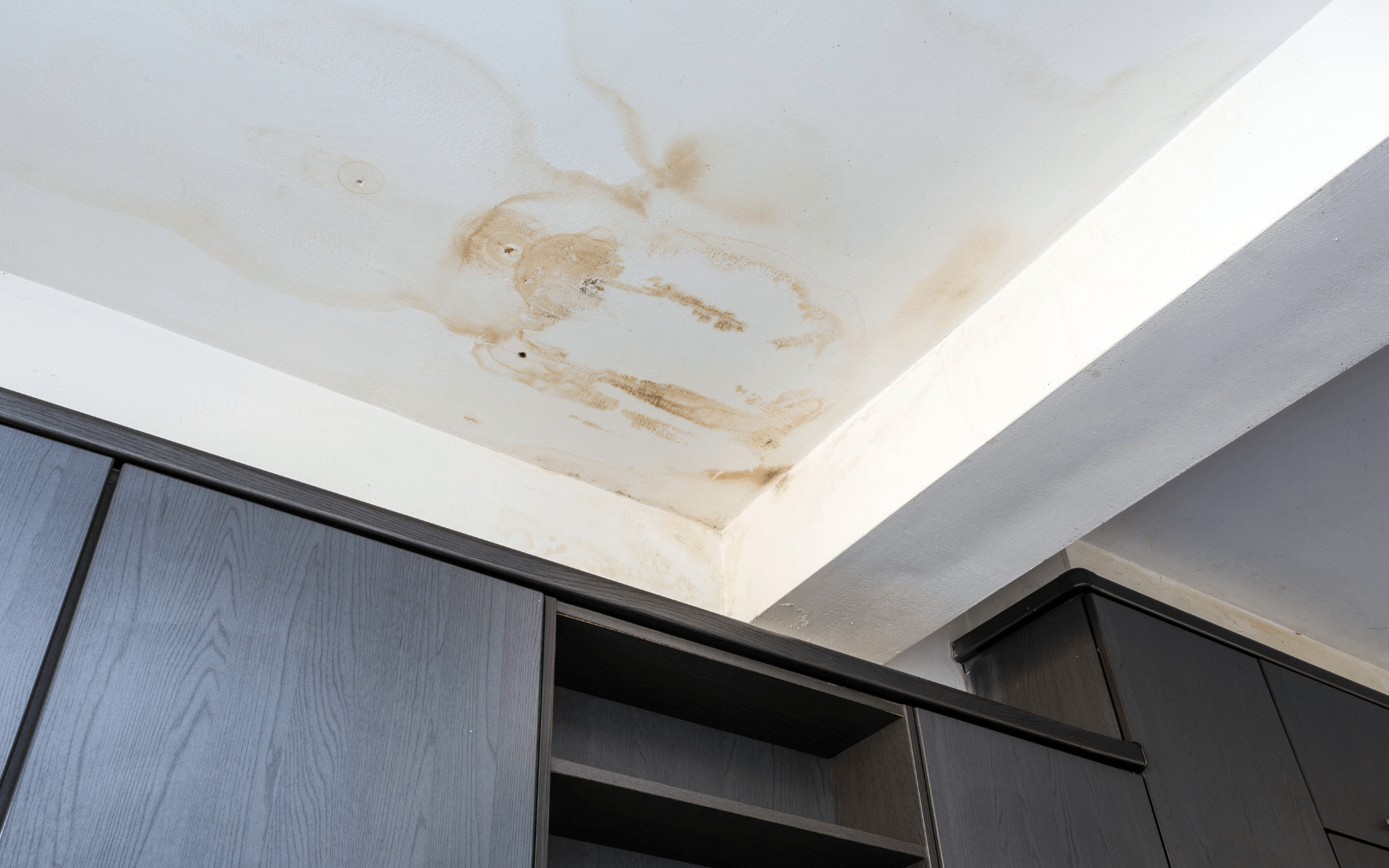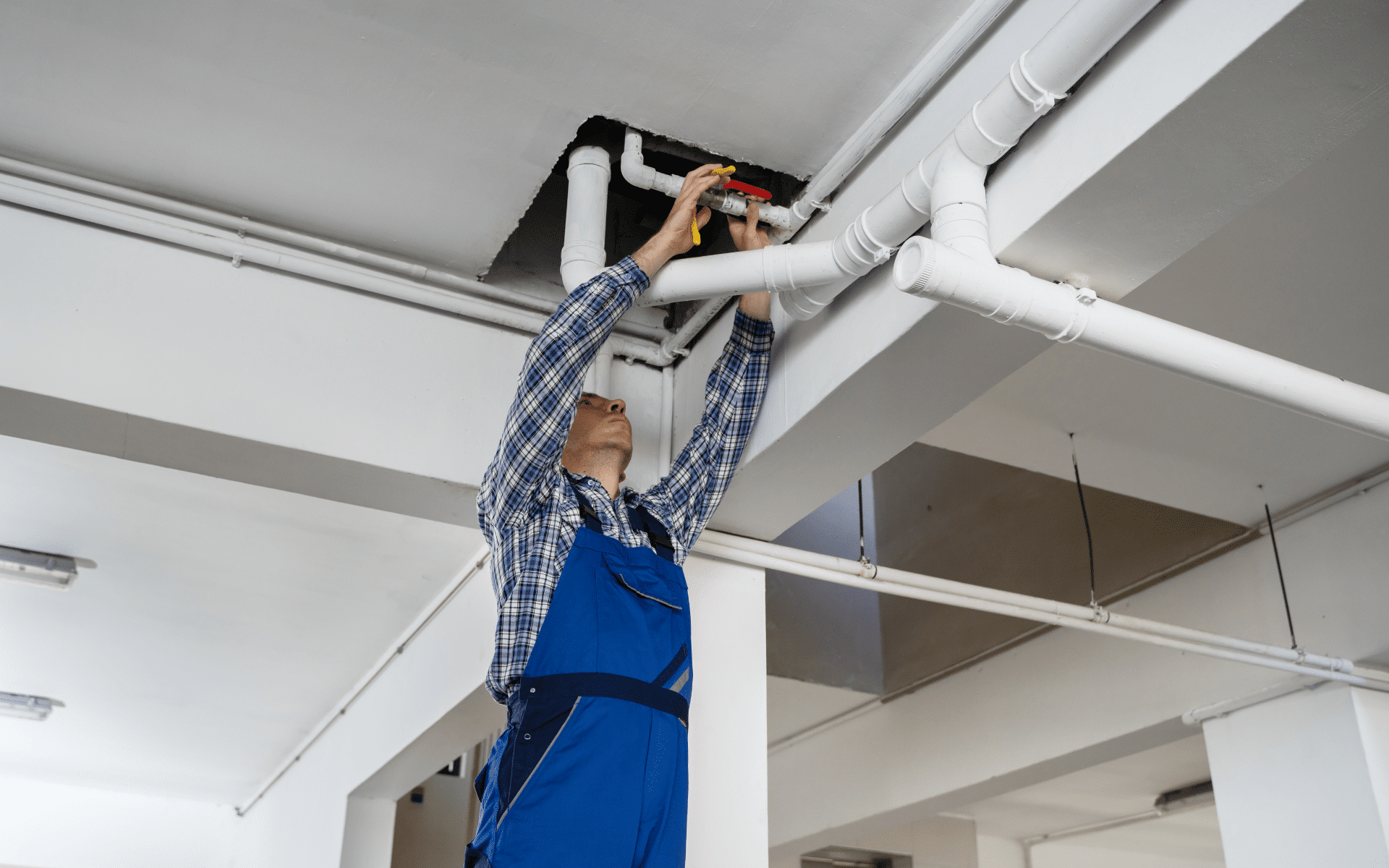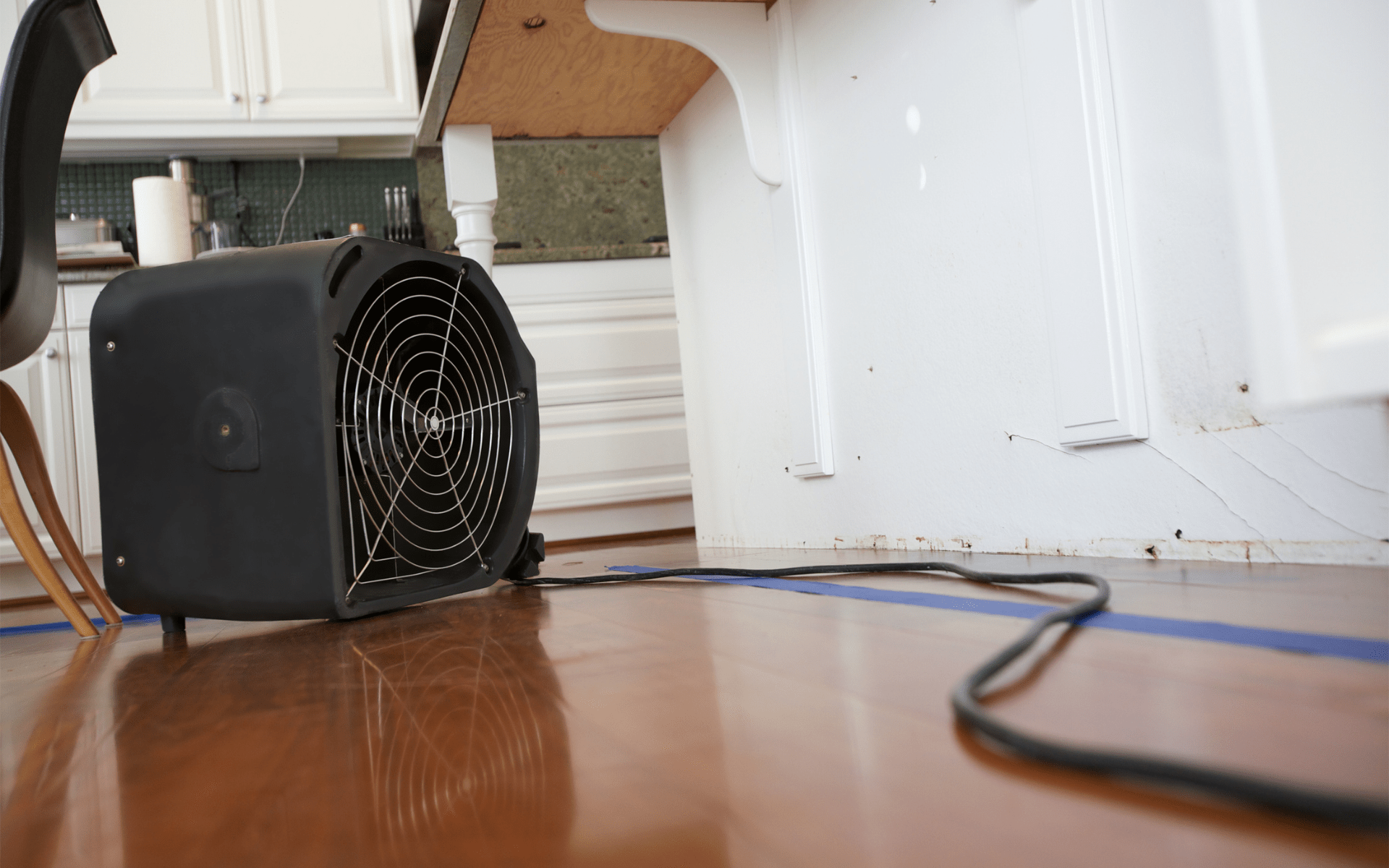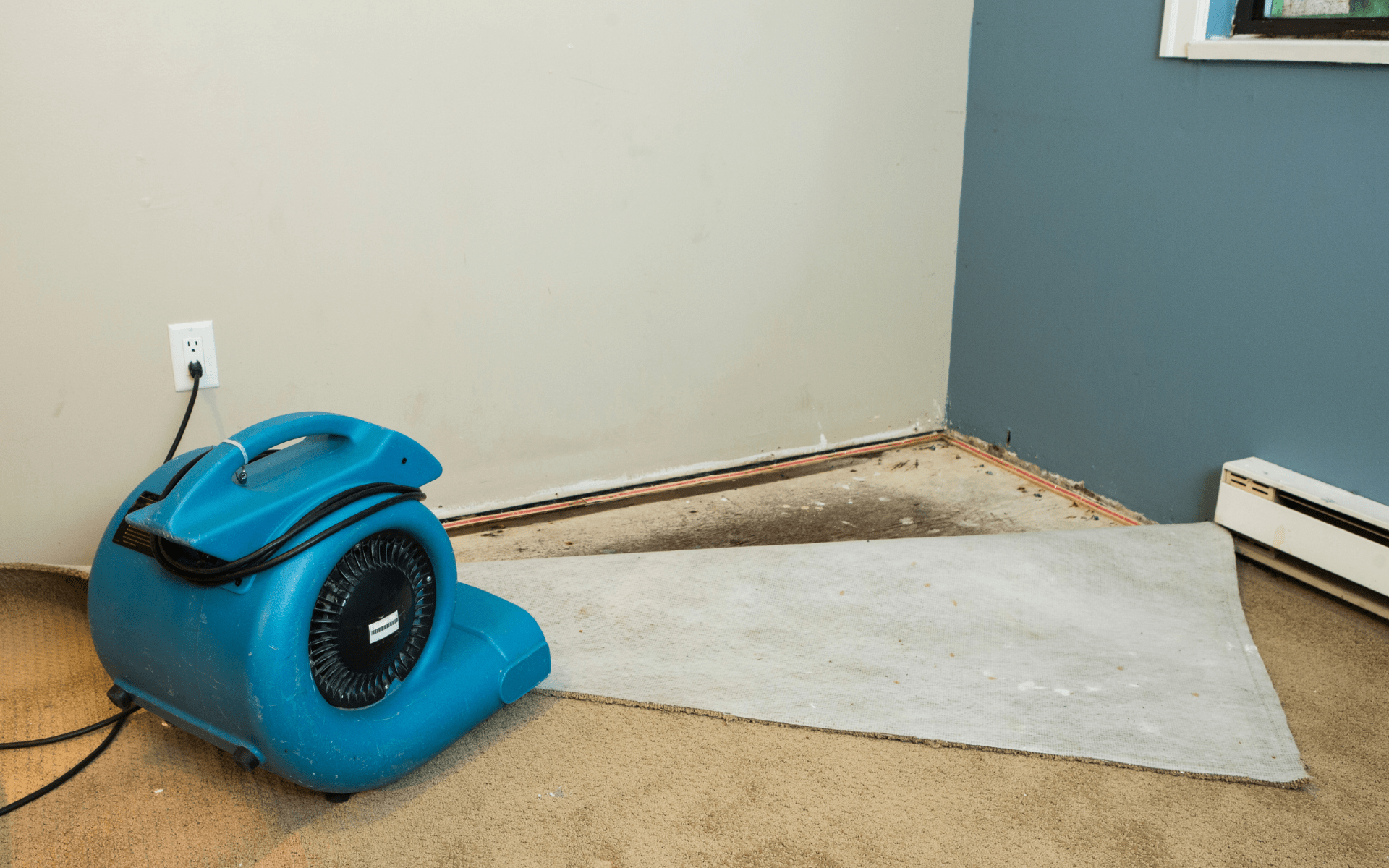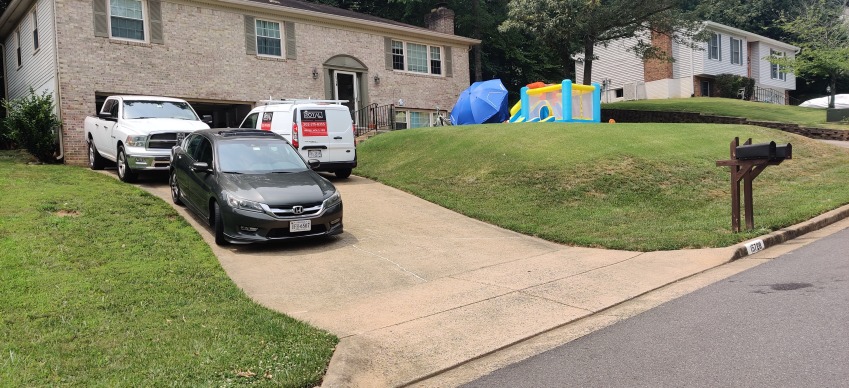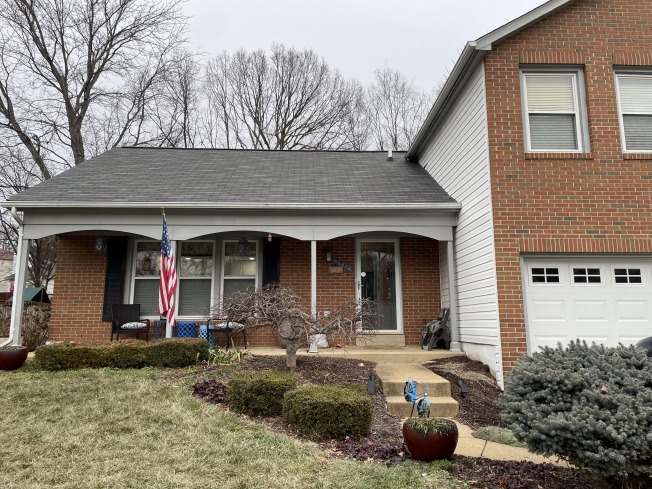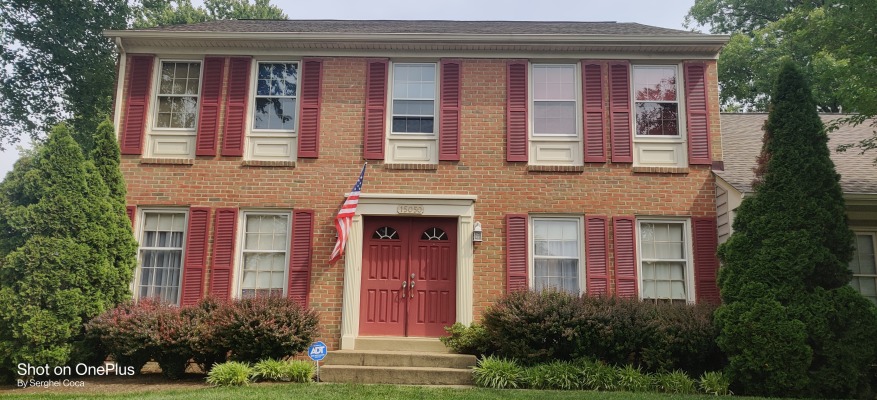Nobody expects to walk into their home and find water where it shouldn’t be. A pipe bursts in your basement while you’re at work, your washing machine decides to leak all over the laundry room floor, or last night’s storm found a way through your roof. Suddenly, you’re dealing with wet floors, damaged belongings, and the overwhelming question of what to do next. Knowing how water damage repair works helps you act quickly when problems occur and decide whether you can fix things yourself or need to call for help.
Before calling a restoration company, we’ll explore everything you need to know about fixing water damage in your home. Some water issues can be managed on your own, but major water issues require expert assistance to protect your family and preserve your home’s value.
What is Water Damage?
Excess water entering your home creates problems that can harm your personal property, floors, walls, and other valuable belongings. Water damage can start from many sources like a burst pipe flooding your basement, washing machines overflowing, a leaky roof dripping into your living room, sewage backup contaminating your home, or natural flooding that brings water flowing through your doors and windows.
Types of Water Damage
The first step is assessing the type of water damage in your home. This can help pinpoint the source and determine the best repair approach. Common types of residential water damage include:
Clean Water Sources: Clean water comes from sources like burst pipes, leaky roofs, or overflowing sinks. Cleanup is easier if you act quickly, but even clean water can lead to mold growth if not dried properly within 24 to 48 hours.
Gray Water Sources: Contamination exists in gray water from sources like washing machines, dishwashers, or sump pump failures. More careful cleanup is required and may need professional water damage cleanup to prevent health hazards.
Black Water Sources: Heavy contamination from sewage backup, flooding, or other dirty sources creates serious health hazards. Professional help is always required immediately for black water damage. Never attempt to clean black water damage yourself.
Once you categorize the type of water damage, you can more easily identify the source of slow leaks, needed repairs, and how to prevent future issues.
Signs of Water Damage are New or Old
Determining how long water has been invading your home can help assess the extent of damage and needed repairs. Here are signs of new vs. old water damage:
New Water Damage Signs
Standing water or visible moisture appears in affected areas. Water spots haven’t yet caused warping or mold. Fresh water stains show on walls, floors, or ceilings. Recent water events like a burst pipe can be identified. Materials feel wet but aren’t yet damaged structurally.
Old Water Damage Signs
No visible water exists but materials feel damp or soft. Warped, buckled, or sagging floors and walls are present. Mold growth spreads across surfaces. Musty odors indicate hidden mold problems. Peeling paint or crumbling drywall appears. Stains show dark edges or rings. The damaged area feels soft or spongy to touch.
The longer water seeps or stands, the more extensive damage it causes. Catching it early is key to simpler repairs.
Risks of Untreated Water Damage
Ignoring water damage makes problems worse and more expensive to fix. Several serious risks develop when water damage goes untreated.
Structural damage: Untreated moisture in walls, floors, and foundations weakens integrity. This requires extensive repairs.
Mold growth: Excess moisture allows mold to rapidly spread across surfaces. This creates respiratory hazards and forces full mold remediation.
Warping & decay: Wet wood warps and weakens over time. Carpets and padding become ruined. Materials need a full replacement.
Bacteria & allergens: Standing water breeds bacteria, mold, and pests, creating indoor air quality issues.
Vermin: Rats, bugs, and other vermin are attracted to damp conditions. They infest and spread disease.
Unsafe electricity: Wet electrical systems can cause short circuits and create fire risks. Electrocution is also possible.
Injuries: Weak, soggy floors and surfaces pose fall and injury hazards for occupants.
Don’t let small issues go unaddressed. Water damage only worsens over time, and repairs become more invasive and costly. Act quickly to prevent destruction of your home.
Immediate Response Steps
No matter the water damage source, it’s crucial to act quickly to mitigate damage and prevent mold growth. Here are important immediate response steps:
Turn Off the Water Supply
Find and stop water flowing into your home immediately. Turn off the main water supply if a burst pipe is flooding your house, or fix the immediate problem if possible.
Remove Excess Water
According to the Environmental Protection Agency (EPA), standing water should be removed within 24-48 hours to prevent mold growth. The EPA recommends calling in professionals for any flooding over 4 feet or flood water that sits for more than two days.
Use a wet/dry shop vacuum, sump pump, mops, and towels to remove standing water from hard surfaces. Soak up any surface upholstery water damage and lay out wet rugs, pillows, bedding, etc., to air dry.
Check for Structural Damage
Inspect walls, floors, and ceilings for sagging, cracks, or collapse. This indicates waterlogged materials and structural issues to address.
Inspect Electrical System
Water and electricity don’t mix! Check electrical outlets and wiring in flooded areas for damage. Turn off power as needed to prevent electrical fires. Call an electrician for assessment help.
Look for Hidden Water
Water can spread under materials and emerge in surrounding areas. Inspect adjoining rooms, above and below-flooded spots, for any additional leaks or moisture.
Call Your Insurance Company
Most homeowners’ insurance policies cover water damage to homes and personal property. Contact them as soon as possible to start a claim.
Document the Damage
Take photos and videos of all damage before starting cleanup. This provides proof of damage. Insurance companies require this documentation for processing your claim.
Mitigate Mold Risks
Open windows, turn on fans, and use dehumidifiers to start removing moisture from the air. Remove wet materials and mop up residual moisture. Good air circulation helps prevent mold growth from starting.
The Water Damage Restoration Process
Once excess water is removed and immediate risks addressed, a more extensive restoration process can begin to repair damages and prevent mold growth. Here are the typical phases:
Emergency Response and Assessment
Professional restoration teams respond to your one call for help and assess the full extent of damage throughout your property. They identify the water source, determine what type of water damage exists, and create a restoration plan. Emergency water damage services operate 24/7 because acting quickly prevents further damage from developing.
Water Extraction and Removal
Specialized equipment removes all standing water from affected areas using industrial-grade tools. Water extraction equipment works much faster than household methods. Teams also remove damaged materials like wet carpet, padding, and soaked drywall that can’t be saved.
Drying & Dehumidification
Powerful commercial dehumidifiers and air movers dry out materials thoroughly from the inside. Temperature, air circulation, and humidity levels are closely monitored. Based on recommendations from the Institute of Inspection, Cleaning, and Restoration Certification (IICRC), wet carpets, padding, and other porous materials should be discarded after flooding to prevent mold and mildew issues. A structural drying system may be installed. Proper drying can take weeks or months for serious flooding.
Mold Remediation
If mold growth is detected, mold remediation involves removing contaminated materials, cleaning with antimicrobials, and ensuring that spores of find mold are no longer present. Protective gear prevents exposure during cleanup. An antimicrobial sealant is often applied afterward.
Sanitizing & Deodorizing
Once dry, surfaces are sanitized to remove bacteria, odors, mold spores, and residue left behind. Disinfectants or ozone treatment remove contaminants and refresh the space. Air scrubbers filter out particles. Gray or black water damage especially requires this step to eliminate harmful bacteria and health hazards.
Restoration and Repairs
Rebuilding and repairing damaged areas completes the restoration process. Work might include installing new flooring, replacing drywall, repainting walls, or major structural repairs, depending on the extent of damage discovered. Belongings like furniture and electronics may also need replacement. The goal is to restore the home to its original, pre-loss condition.
Proper restoration dries out the home thoroughly to prevent future issues. It also documents damage for insurance claims and facilitates necessary repairs.
DIY Water Damage Dry Out Tips
Minor water damage might be manageable by yourself if you act quickly and follow proper procedures using these tips:
Remove excess water with wet/dry vacuums and mops
Lift wet rugs, cushions, bedding, etc., and lay them out to dry
Place bowls to catch dripping water beneath leaks
Open windows and doors for cross-ventilation
Run ceiling fans, portable fans, and dehumidifiers continuously
Absorb humidity with desiccants like rice, baking soda, or silica gel
Run air conditioning (dehumidify mode) or heating as needed
Check moisture levels using a hygrometer
Discard soaked porous materials like drywall, insulation, and carpets
Lay out books, papers, photos, etc., to dry and prevent mold
Wipe down hard surfaces with disinfectant to inhibit mold
Check for hidden moisture under floors, behind walls, in ventilation
Regularly monitor affected areas until fully dry. It may take days or weeks, depending on the moisture level. Remember that DIY cleanup only works for small amounts of clean water. If mold appears, take immediate remediation steps.
Repairing Common Water Damage Areas
Different areas of your home need different repair approaches when water damage occurs. Here are tips for addressing common water-damaged areas:
Hardwood Floor Damage: Warping and buckling happen quickly when hardwood floors get wet. Small amounts of clean water might be manageable with fast drying, but extensive flooding usually means replacing damaged boards or entire floor sections.
Wall and Drywall Problems: Cut out wet drywall at least 12 inches above the water line to prevent mold growth. Drywall that stays wet for too long needs complete replacement to maintain structural integrity.
Carpet and Padding Issues: Soaking for more than 48 hours usually means the carpet can’t be saved effectively. Padding underneath almost always needs replacement, even if the carpet surface can be cleaned.
Basement and Crawl Space Concerns: These areas commonly develop ongoing moisture problems after initial damage. Fix the water source, improve drainage, and consider installing a sump pump to prevent future flooding events.
Electrical System Damage: Never attempt to repair water-damaged electrical equipment yourself due to safety risks. Have a licensed electrician inspect and replace any electrical components that got wet.
Addressing water damage thoroughly protects your biggest investment, which is your home.
Preventing Future Water Damage
To help avoid water damage issues going forward:
Inspect plumbing lines and water-based appliances for leaks periodically
Fix loose shingles and clean gutters regularly to prevent leaky roof problems
Update old pipes and install flood prevention systems
Clean gutters and downspouts regularly
Grade soil properly to divert groundwater away from the foundation
Install sump pumps, dehumidifiers, and vapor barriers in basements
Maintain proper humidity levels and ventilation
Get flood insurance and create an emergency response plan
Ongoing maintenance keeps problems at bay. But even with diligent prevention, water damage can still occur. Being prepared to respond quickly limits damage and saves precious time restoring your home to comfortable conditions.
Time to Call Restoration Professionals
Certain water damage situations always need professional help to address safely and effectively.
Large Water Volumes: Standing water that sits too long causes extensive damage throughout your home.
Contaminated Water: Gray or black water from sewage backup or flooding requires professional cleanup to protect your health from serious hazards.
Structural Concerns: Professional expertise becomes essential when walls, floors, or ceilings show signs of structural damage.
Mold Growth: Stop DIY efforts immediately if you see or smell mold developing. Mold removal remediation requires specialized equipment and training to handle safely.
Electrical Damage: Water-damaged electrical equipment creates serious safety hazards requiring professional attention. Electrical repairs should never be attempted by homeowners.
Insurance Requirements: Some homeowners’ insurance policies require professional restoration for coverage eligibility. Check with your insurance company about their specific requirements.
Professional management of the entire process becomes valuable if you don’t have time to handle the drying time and monitoring required for proper cleanup.
Don’t Let Water Damage Get Worse
Water damage spreads fast and gets more expensive every hour you wait. Quick action saves thousands in water damage restoration costs and prevents mold growth that threatens your family’s health. Minor water problems might be manageable on your own, but extensive damage, contaminated water, or structural issues need professional expertise to handle safely.
Need immediate help with water damage? Call the nearest water damage restoration company at (888) 255-3515. Royal Restoration provides Water Extraction and Drying, Water Damage Restoration, and Flood Damage Cleanup and Restoration services. Connect with us on Instagram and Facebook for more helpful restoration advice.

